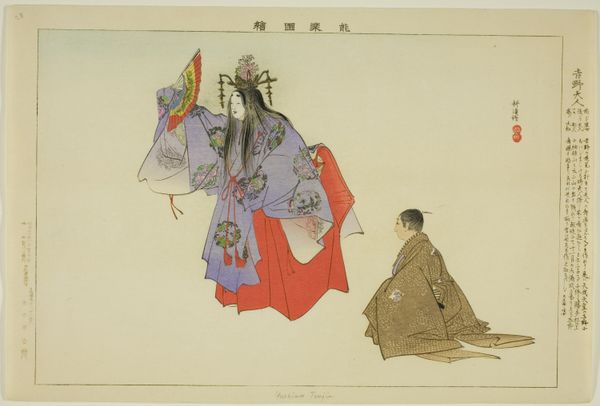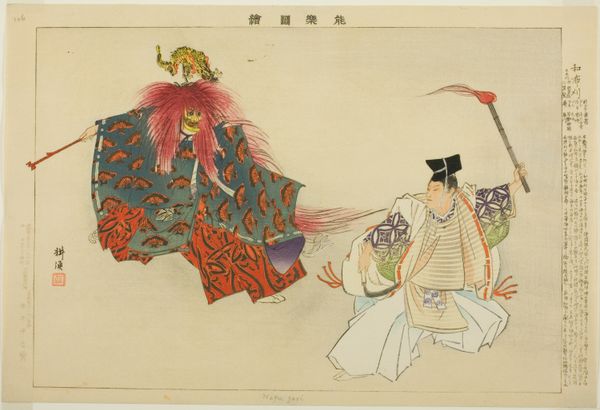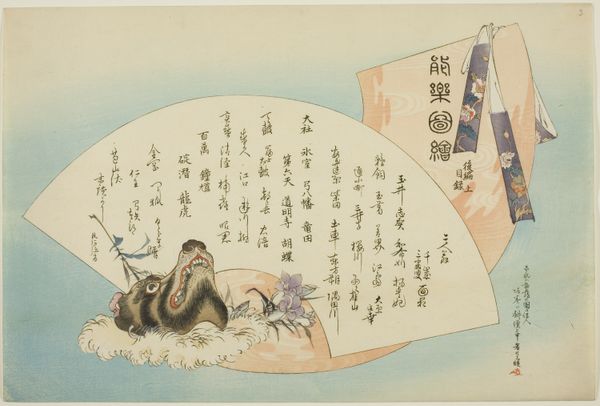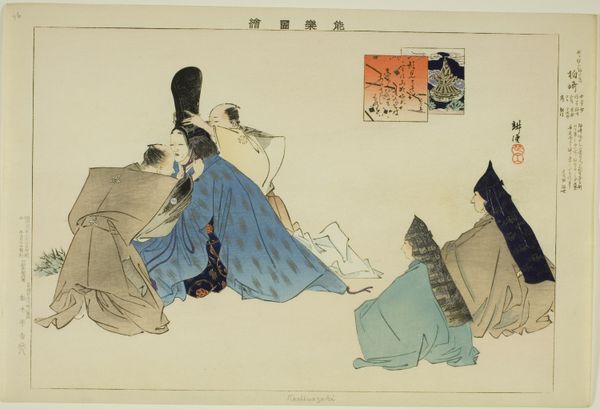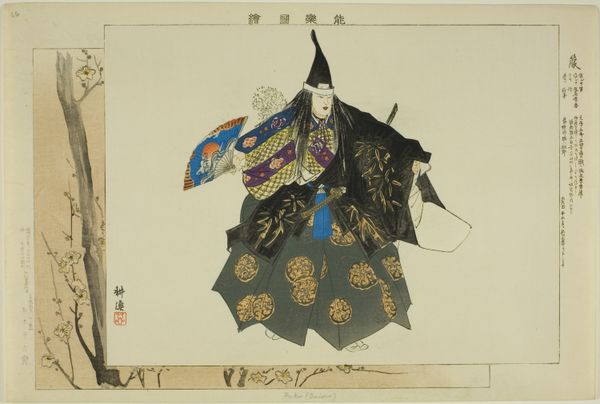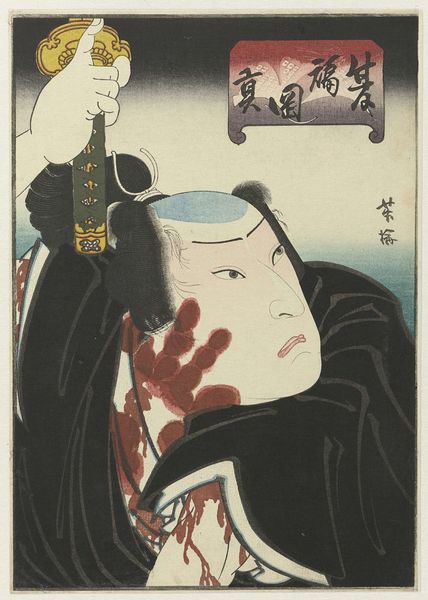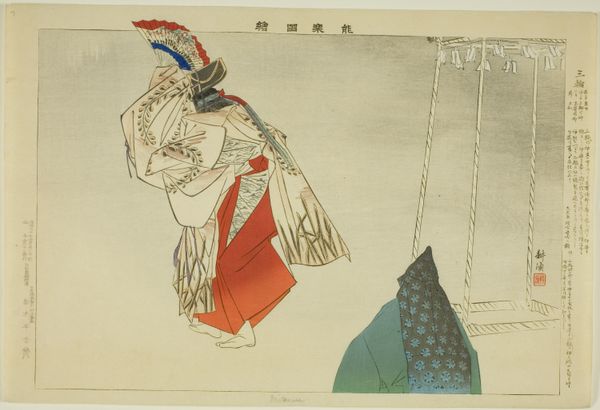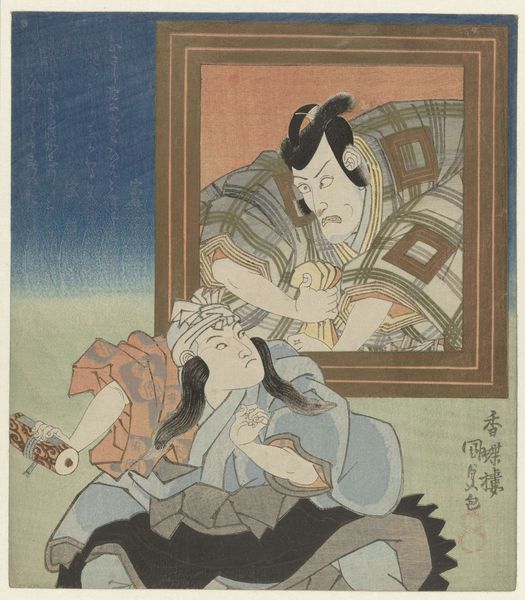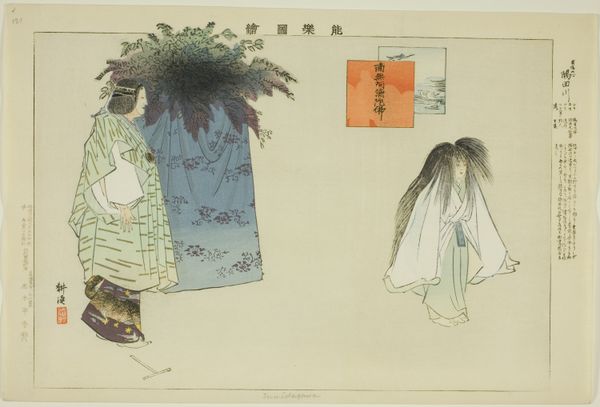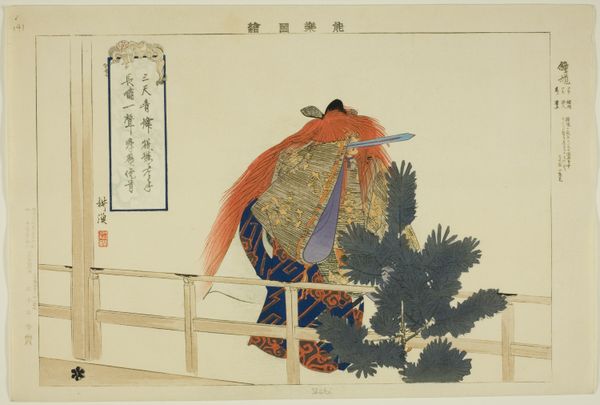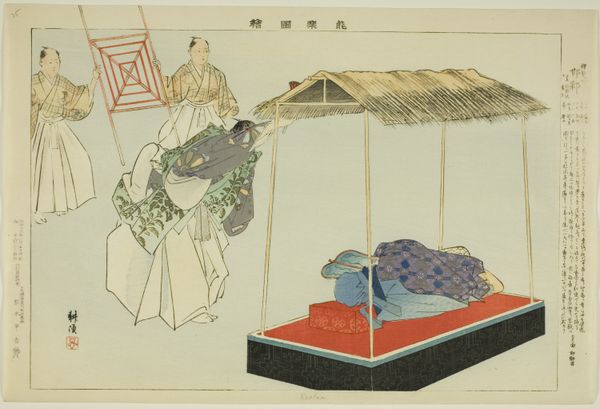
Raiden, from the series "Pictures of No Performances (Nogaku Zue)" 1898
0:00
0:00
Dimensions: Approx. 25.2 × 37.4 cm (10 × 14 4/3 in.)
Copyright: Public Domain
Curator: Standing before us is "Raiden, from the series "Pictures of No Performances (Nogaku Zue)," created in 1898 by Tsukioka Kôgyo. It is currently held here at the Art Institute of Chicago. The print employs ink and colored pencil, and I find its subject striking. Editor: Striking is certainly one word for it. My first impression is of restrained power. The figure seems poised, ready to unleash some pent-up energy, yet the color palette is muted and the pose somewhat contained. Curator: Exactly! This tension speaks volumes. Raiden, often associated with thunder and lightning in Japanese mythology, appears in the context of Noh theatre, a highly ritualized and symbolic art form. Notice how Kôgyo uses the figure to depict the symbolic layering inherent in Nogaku. Editor: Noh, yes. The social function of art is very present here. A divine figure presented within a controlled, upper-class setting like Noh is quite loaded with cultural information. Do you find it subverts or reinforces power dynamics? Curator: I think it complicates them. On the one hand, depicting a god domesticates him, makes him a spectacle for the elite. However, Raiden remains fundamentally untamed. Look at the wild hair, the intense gaze barely visible beneath the mask, those striking arms. There is cultural memory contained within the symbols. Editor: The mask is definitely a key element. It embodies transformation and hidden identity, recurring themes within theatre history generally. Also, that raised platform is not merely decorative, but crucial for heightening drama within these performances. How the powerful engage with art says much about both. Curator: Noh was, after all, deeply intertwined with samurai culture. The symbolism embedded in the performance speaks to moral codes, historical narratives, and spiritual beliefs that upheld that social order. This print makes palpable that moment of change in Japanese social performance. Editor: So we have Raiden, a force of nature, mediated through layers of performance and cultural context, prompting us to ask questions about power, representation, and the enduring relevance of ancient narratives in a modernizing Japan. The image functions as social document, but with great emotion behind the facade. Curator: Indeed. It prompts us to reconsider the weight of performance. I find that even as a print, it manages to carry within itself a vibrant memory of what it means to be both powerful and powerless, constrained and free. Editor: Yes, a worthy reminder that images often reveal as much about the observers as about what is being observed.
Comments
No comments
Be the first to comment and join the conversation on the ultimate creative platform.

